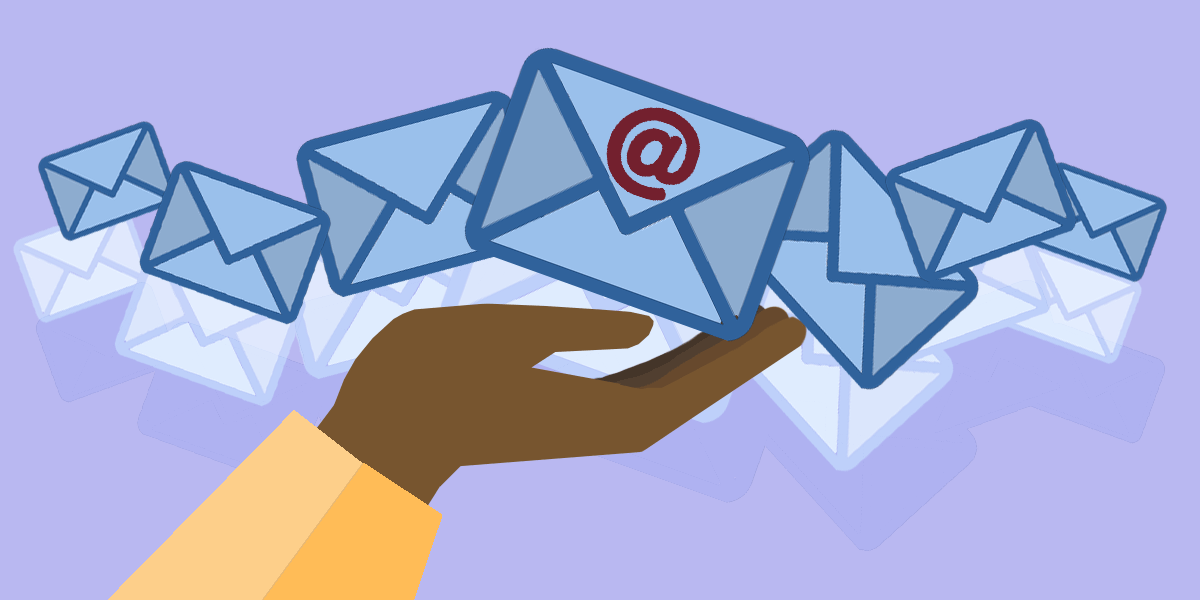
Whether or not you’re new to the marketing scene, mastering the art of email marketing is an excellent way to generate ROI, feature your organization’s products and build brand exposure. Your campaigns should all be responsive and informative in order to catch the eye of today’s email recipients.
Practice Email Segmentation
Segmentation is a wonderful marketing technique that’ll help you organize and personalize your emails.
Segmented Lists
The purpose of creating these lists is to send relevant emails to a targeted group of people that are most likely to engage with that specific email content. For example, if you own a company that offers three different products, separate your contacts into three groups based on the job title or function that makes them most likely to be interested in a specific product. By doing so, your audience will be receiving the emails that are relevant and interesting to them. It also prevents happy clients and prospects from ignoring your emails because they won’t be receiving emails that contain irrelevant copy.
Segmented Copy
You can also practice email segmentation by conducting personalized email experiences. Start by adding your recipient’s name to the email’s subject line. Doing so provides a higher rate of consumer interest and genuine credibility.
“40% of consumers say they have purchased something more expensive than they originally planned because their experience was personalised”
– Econsultancy
Analyze your Audience
The point of email marketing is to analyze what captures your audience’s attention. Oftentimes email content a prospect might find interesting and informative may not be as intriguing to an existing client.
Retention emails have a tendency to perform well among existing customers. These types of nurturing emails typically serve as a refresher of your products and services. The bright side to sending out retention emails is the opportunity to keep your brand top-of-mind and to upsell current clients. Afterall, it’s easier to sell to existing customers than new ones.
“Existing customers are 50% more likely to try new products, and spend 31% more than new customers”
– via Appcues & Fieldboom
Existing-Customer Emails:
- Milestone Emails: Send out customer anniversary emails
- Referral Emails: Offer incentives to loyal clients to participate in referral campaigns
- Spotlight Emails: Remind clients of your existing products that could benefit their organizations
- Customer-Appreciation Emails: Thank your customers and offer surveys to brainstorm methods that’ll help reduce churn
On the other hand, product-centered emails are a great way to inform and engage prospects and new clients with your organization and its services. These types of emails have more of a promotional approach as opposed to soft-selling retention emails.
New-Customer Emails:
- Onboarding Emails: These welcoming emails are meant to excite your new clients about what services you provide
- Training Emails: Educate your clients on your services by offering demos and setting up trainings
Display Testimonials
Drive brand credibility by displaying client testimonials throughout your emails. Testimonials are highly influential references that build trust and can help recipients see real value in your services. Using real customers to showcase your company success is a great way to highlight products and customer service. Nothing captures prospects like the persuasion of satisfied customers.
Create Captivating CTAs
Next, implement riveting CTAs to compel clients into engaging with your organization. If your company is releasing a new product, attract email recipients by unveiling the product release with a captivating image that links to the new product’s landing page in the header of the email. You can also entice recipients to learn more about your products by including colorful “learn more” buttons in your email. Either way, your CTA strategy should always feature active language that aims to get the reader to do something at that moment.
Effective CTA Slogans:
- Save today
- Learn more
- Watch now
- Start today
- Follow us
Test your Emails
Once you’ve completed all of the previously listed steps, test out your email to a selected group. Some organizations prefer to test emails within their company first and others can select a small email list to send it to and then test it. Whichever way you prefer, consider creating two different versions and then choose which one performs best to send to your mass audience. Integrating these A/B testing techniques into your email marketing efforts can help you find the best ways to communicate with your audience. If you’re thinking about starting small, we suggest testing out different subject lines. When you make changes to compare, limit the number of edits to the different email versions when conducting the testing process. This can help eliminate confusion when establishing what changes are leaving the better impression on your email recipients.
Critical Mention
Looking for a way to monitor, analyze and share your coverage from TV, radio, online news and social media sources?
Get a closer look at the most robust media monitoring and intelligence platform in the industry by scheduling a free, custom demo.

Priscilla Osorio
Priscilla is the marketing coordinator for Critical Mention. Early on in her career, she developed a passion for marketing, writing and anything within the communication field. During her leisure time, she loves to watch her favorite sports teams and explore new restaurants with friends and family.








